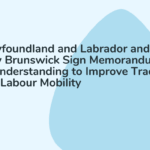March 12, 2020—Ottawa—Today the Honourable Marco Mendicino, Minister of Immigration, Refugees and Citizenship, tabled the 2020‒2022 Immigration Levels Plan in the House of Commons.
The new plan will benefit all Canadians because immigration drives economic growth, spurs innovation and helps employers access the talent they need to thrive. Welcoming more newcomers will help to address the demographic challenges of an aging population and to compete and win in a competitive global marketplace.
The proposed plan is based on the solid economic foundation of the previous levels plan and continues to responsibly grow the number of permanent residents admitted to Canada each year, from 341,000 in 2020 to 351,000 in 2021 and 361,000 in 2022.
With this plan, the Government will implement a number of key commitments:
- responsibly grow Canada’s population;
- take the steps to make the Atlantic Immigration Pilot a permanent program to continue supporting economic growth in Atlantic Canada, with 5,000 admissions;
- create a new stream to provide a safe haven for human rights advocates, journalists and humanitarian workers at risk abroad;
- facilitate the Rural and Northern Immigration Pilot and the Agri-Food Immigration Pilot, to address specific labour market shortages;
- support family reunification through sustained high admissions; and
- reduce application processing times and improve service delivery and client services at Immigration, Refugees and Citizenship Canada.
We will also continue to implement our plan to increase Francophone immigration outside Quebec, while supporting the successful integration and retention of French-speaking newcomers and strengthening Francophone communities.
With increased space for the Provincial Nominee Program, an Atlantic Immigration Program, and the Agri-Food and Rural and Northern Immigration Pilots, the levels plan directly addresses labour market needs across Canada to ensure businesses can get the talent they need, where they need it.
Quotes
“Our immigration system benefits all Canadians by strengthening the middle class, keeping families together and building strong and inclusive communities. This increase in immigration levels supports a system that will help Canadian business create good middle class jobs and grow the economy while ensuring Canada continues to meet its humanitarian obligations around the world.”
– The Honourable Marco E. L. Mendicino, Minister of Immigration, Refugees and Citizenship
Quick facts
- This new 3-year plan demonstrates that Canada’s well-managed immigration system continues to maintain public confidence, and increases permanent immigration to almost 1% of the population by 2022.
- A significant stakeholder and public engagement exercise—including public opinion research and stakeholder consultations—was carried out in 2019, which enabled IRCC to obtain broad perspectives that have directly impacted all elements of the plan.
- Extensive engagement with provincial and territorial representatives also took place over the past year.
- With first-hand stories, IRCC’s Immigration Matters campaign shows Canadians how communities across the country benefit directly from immigration.
- Under the Canada-Quebec Accord, Quebec establishes its own immigration levels.
Related products
- 2020‒2022 Immigration Levels Plan and Supplementary Information
- 2019 Annual Report to Parliament on Immigration
- 2019 Stakeholder Consultations on Levels
- Canada-Quebec Accord
SOURCE: https://www.canada.ca/

